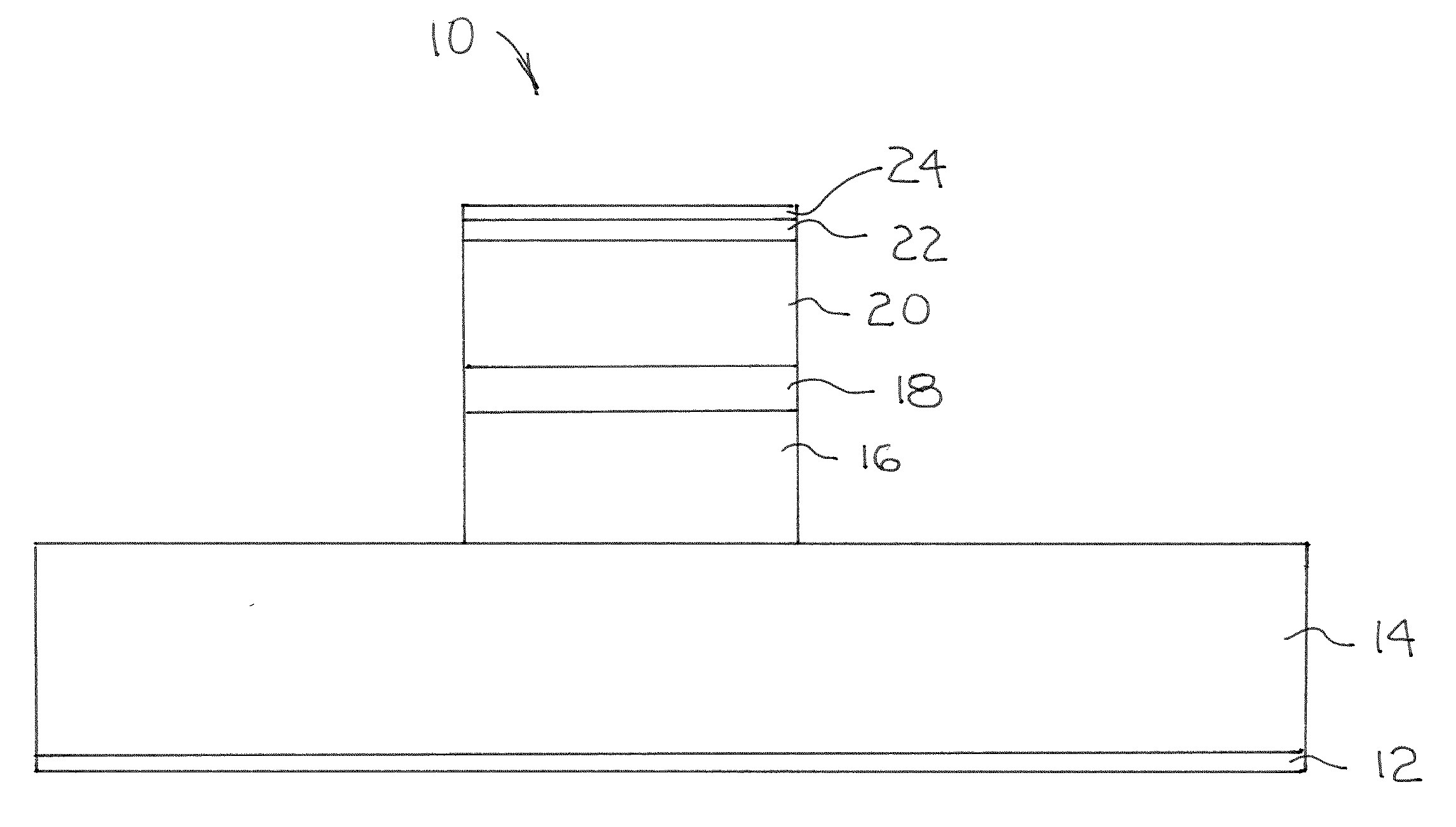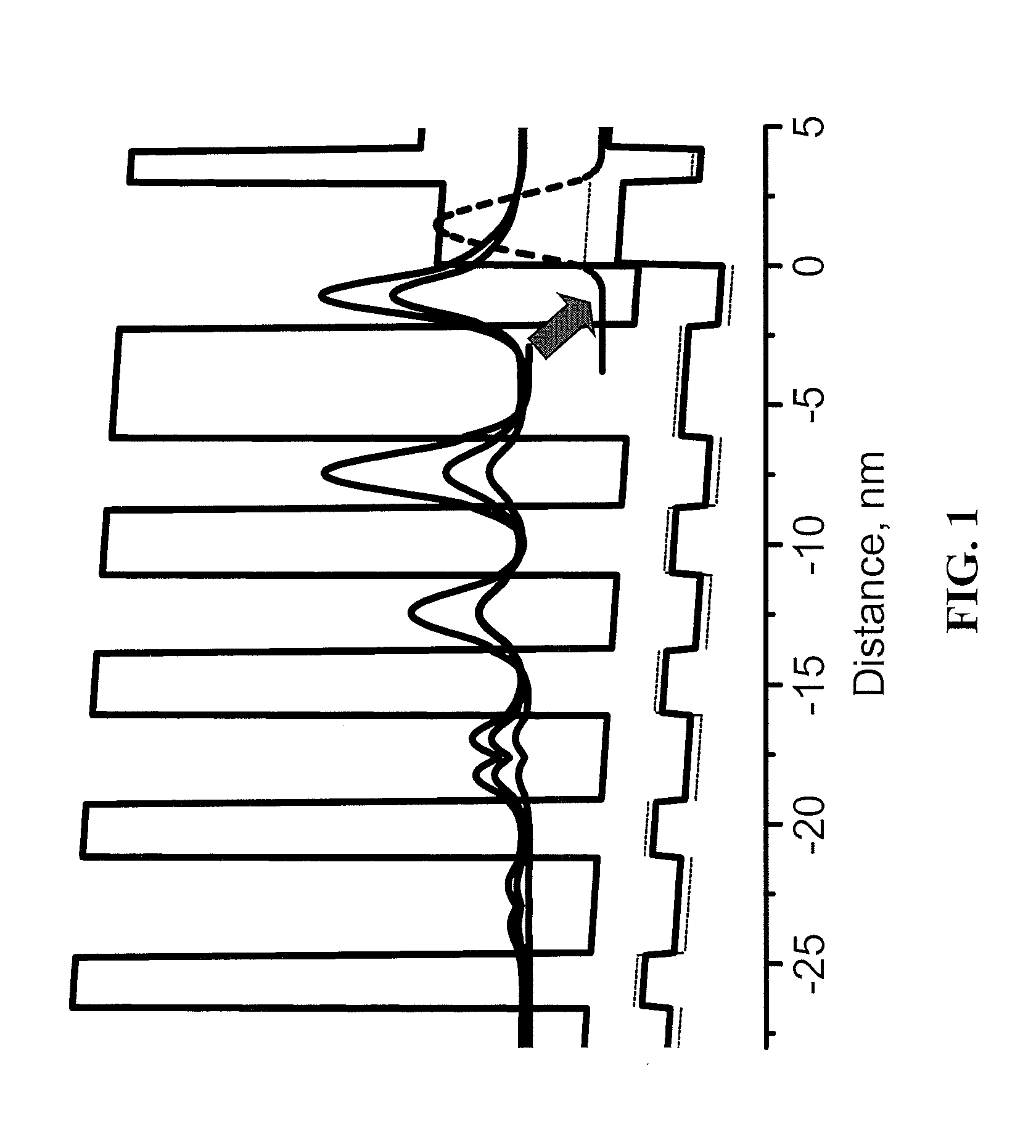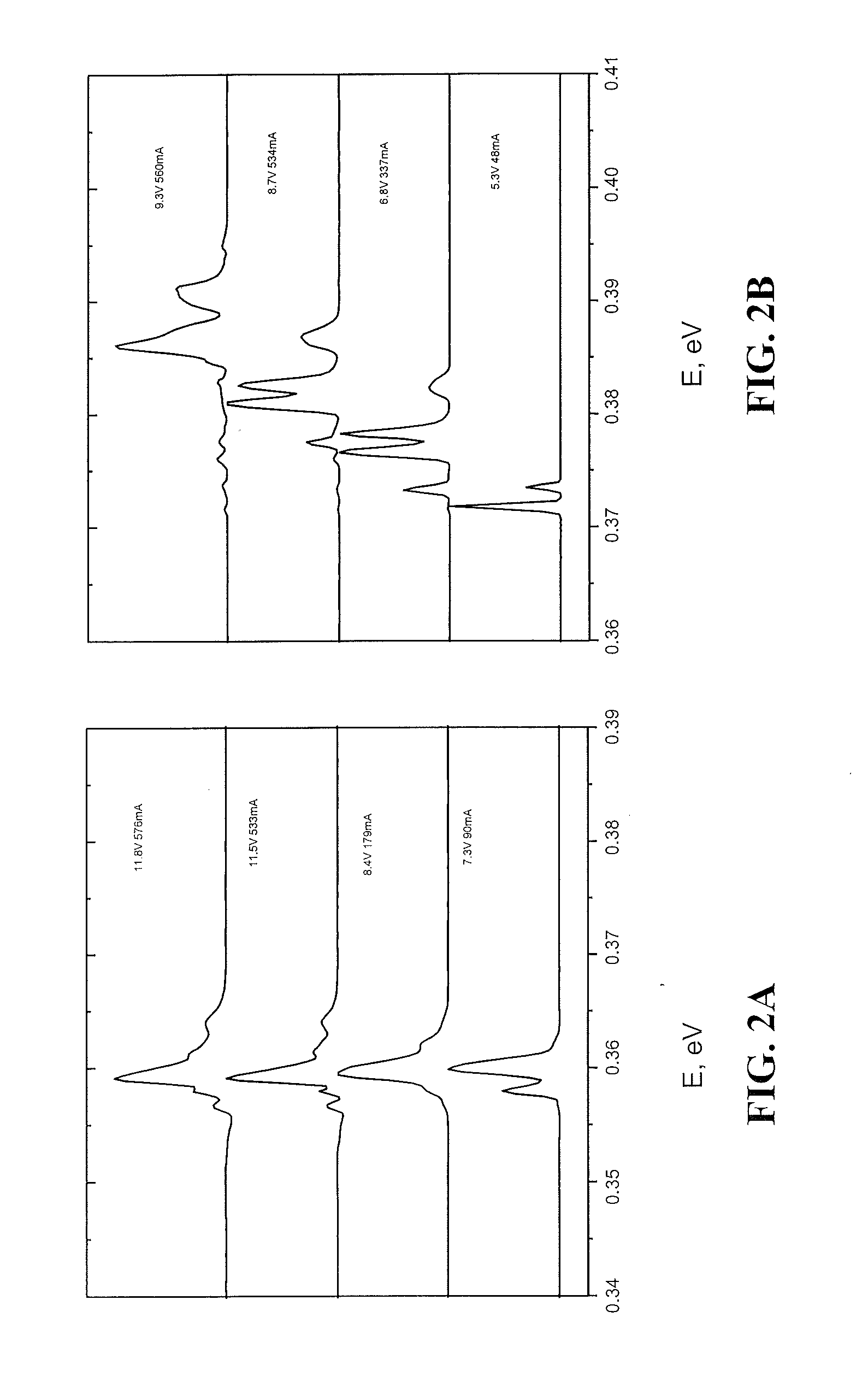Quantum Cascade Lasers with Electrically Tunable Emission Wavelengths
a quantum cascade laser and emission wavelength technology, applied in the field of tunable lasers, can solve the problems of low tuning speed, difficult to use laser wavelength tuning designs with such designs, and serious drawbacks of suggested schemes
- Summary
- Abstract
- Description
- Claims
- Application Information
AI Technical Summary
Benefits of technology
Problems solved by technology
Method used
Image
Examples
Embodiment Construction
[0025]In one embodiment of the invention, the refractive index in a QCL is controlled through Stark tuning of the optical gain maximum frequency (ωL) with respect to lasing frequency. Important advantages of this approach include: high wavelength modulation speed (the modulation frequency is in GHz range), no additional absorption loss is introduced, and device processing is simpler and less expensive since no additional electrode is required. Since Stark tuning can shift wavelength in a direction opposite to that due to thermal tuning, this approach can also be used for stabilization of the laser wavelength for the devices operating in a low modulation frequency mode.
[0026]A typical gain curve of a QCL laser is highly symmetrical, so according to the Kramers-Kronig relations the contribution of the lasing transition to the effective refraction index of the laser mode is zero as long as the lasing wavelength corresponds to the maximum of the gain. To make this contribution nonzero o...
PUM
 Login to View More
Login to View More Abstract
Description
Claims
Application Information
 Login to View More
Login to View More - R&D
- Intellectual Property
- Life Sciences
- Materials
- Tech Scout
- Unparalleled Data Quality
- Higher Quality Content
- 60% Fewer Hallucinations
Browse by: Latest US Patents, China's latest patents, Technical Efficacy Thesaurus, Application Domain, Technology Topic, Popular Technical Reports.
© 2025 PatSnap. All rights reserved.Legal|Privacy policy|Modern Slavery Act Transparency Statement|Sitemap|About US| Contact US: help@patsnap.com



